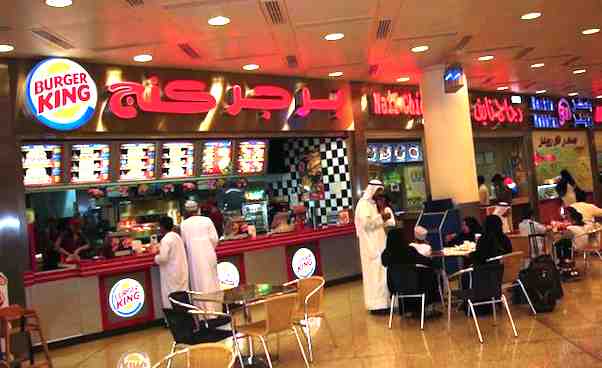
Burger King’s organizational structure today is the result of leadership and ownership transitions. The company’s organizational structure defines the business composition and system for its fast-food operations. Through its corporate structure, Burger King addresses its business environment and the strategies of competitors, like McDonald’s, Subway, Wendy’s, Starbucks, and Dunkin’. The Five Forces analysis of Burger King shows that these competitors create tough strategic challenges in the foodservice market. Through reforms in its company structure, Burger King has improved its fast-food restaurant chain’s performance. Reorganizations have made Burger King’s organizational structure suited to new strategies for multinational business growth.
Burger King’s organizational structure is based on centralization for management control and efficacy. The restaurant company’s growth after its reorganization denotes its current structure’s value. Today, this business structure enables the restaurant chain’s market position. A cohesive centralized strategy supports the goals of Burger King’s vision and mission through this company structure.
Features of Burger King’s Organizational Structure
Burger King has a centralized functional structure. The company changed its structure after merging with Tim Hortons to form RBI. Today, the characteristics of Burger King’s organizational structure are:
- Global centralization (hierarchy)
- Functional groups (foodservice business functions)
- Geographic divisions (regional fast-food markets)
Global Centralization. This current characteristic of Burger King’s organizational structure maintains a core management team at the company’s headquarters that makes most of the major corporate decisions for the global organization. In 2001, Burger King’s business structure was reformed from a decentralized one to a globally centralized structure and hierarchy. The purpose of this change was to ensure that the new organizational structure supports the quick-service restaurant chain’s efforts in improving management effectiveness and business performance.
Centralization in this business structure also promotes cohesiveness in Burger King’s organizational culture (corporate culture). For example, the traits of the fast-food chain’s work culture are centrally institutionalized through the offices, groups, and teams of this company structure.
The centralization of this company structure provides the framework for strategic implementations in the fast-food restaurant business. The implementation of Burger King’s generic competitive strategy and intensive growth strategies goes through this centralized organizational design to ensure a cohesive strategic approach throughout the organizational structure.
Functional Groups. Burger King’s organizational structure has function-based groups or departments that span the global business organization. This feature of the company structure refers to basic foodservice business functions, like human resource management, legal, and IT. Executives lead these structural groups. For example, Burger King has a Senior Vice President (SVP) for Global Operations, an Executive Vice President (EVP) for Finance, and an EVP who functions as the Global Chief Marketing Officer.
Geographic Divisions. Burger King’s company structure has geographic divisions as a tertiary characteristic. This feature of the organizational structure divides fast-food operations according to their geographic locations. The competitive advantages identified in the SWOT analysis of Burger King are used differently to match conditions in the food and beverage markets corresponding to these divisions of the company structure. The following are Burger King’s geographic divisions:
- North America
- Europe, Middle East, and Africa
- Latin America and the Caribbean
- Asia Pacific
Burger King’s Structure: Advantages & Disadvantages
Burger King’s organizational structure has the advantage of strong global control because of corporate centralization and functional departments or groups. In addition, the geographic divisions are a structural feature that enables business flexibility to address market differences, such as through regional menus offering different sets of food and drinks. This structural flexibility accounts for economic and social trends and the other external factors discussed in the PESTEL/PESTLE analysis of Burger King. Flexibility in this organizational structure also translates to region or country specificity in Burger King’s marketing mix (4Ps) and associated strategies and tactics.
However, the main disadvantage of Burger King’s business structure is that the centralization feature limits the flexibility of geographic divisions in immediately responding to regional or local foodservice market changes and trends. The management control through the centralized corporate hierarchy may counteract the inherent flexibility of the regional or geographic divisions of Burger King’s company structure.
References
- Burger King International Locations.
- Kapur, R. (2025). Promotion of team building activities is a healthy approach to promote well-being of the organizational structure. International Journal of Information, Business and Management, 17(1), 51-60.
- Malheiros, C., Gomes, C., Lima Santos, L., & Campos, F. (2025). Monitoring revenue management practices in the restaurant industry – A systematic literature review. Tourism and Hospitality, 6(1), 44.
- Pang, Y., Wu, H., Wang, X., & Shi, M. (2025). Impact of organizational structure and in-organization resource allocation on trust and trustworthiness. Journal of Business Research, 186, 114995.
- Restaurant Brands International (RBI) Corporate Leaders.
- Restaurant Brands International (RBI) Form 10-K.